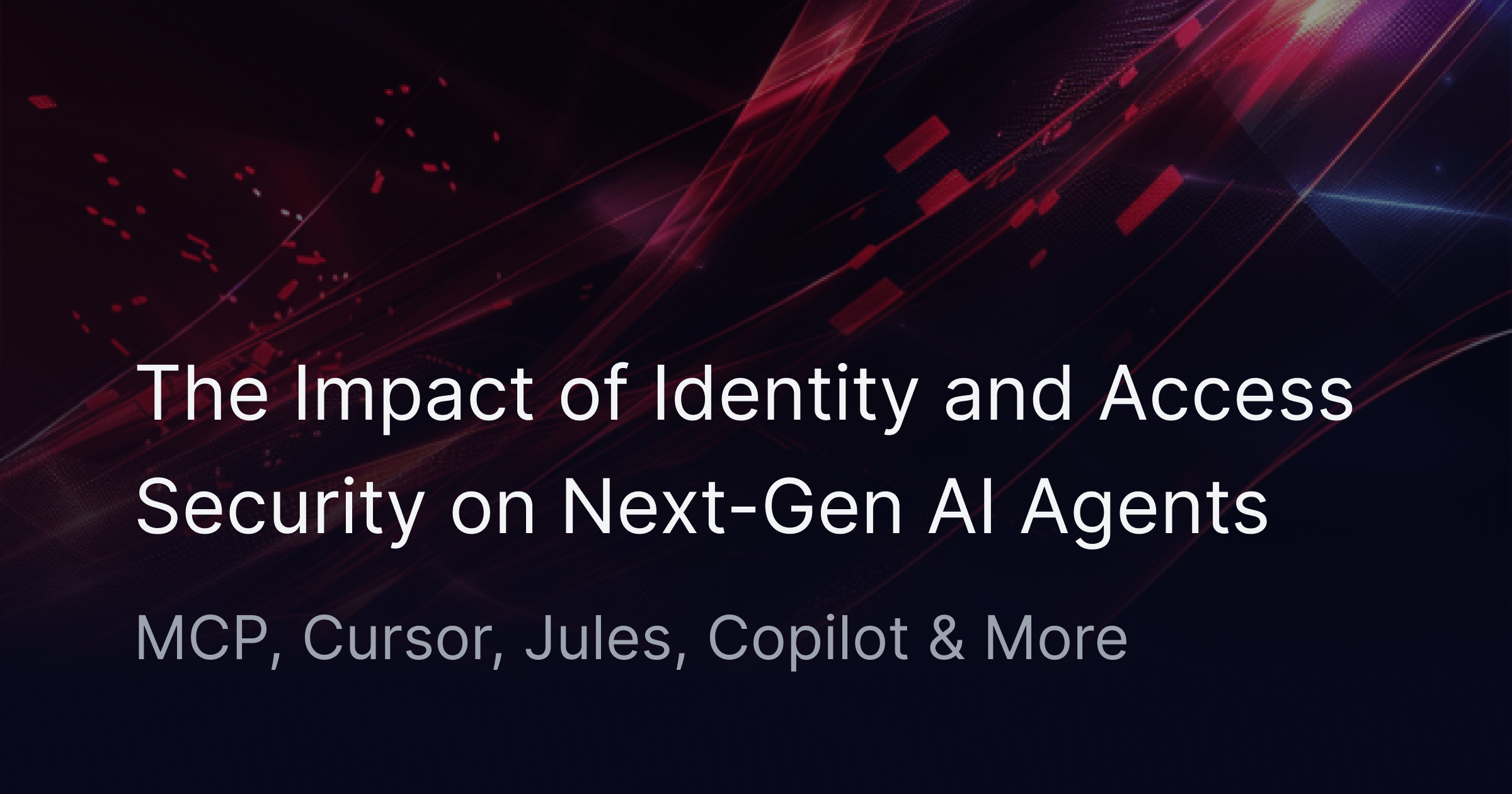The Impact of Identity and Access Security on Next-Gen AI Agents: MCP, Cursor, Jules, Copilot & More

The Impact of Identity and Access Security on Next-Gen AI Agents: MCP, Cursor, Jules, Copilot & More
Introduction
As AI-powered agents like MCP, Cursor, Jules, Copilot, and others become central to modern workflows, identity and access security has never been more crucial. These agents are designed to automate tasks, process sensitive data, and even make autonomous decisions. But without robust identity and access management (IAM), they also present new security risks.
To learn more about Identity Security, contact us at info@adaptive.live
In this post, we'll dive into:
- Why identity and access security matters for AI agents
- Common vulnerabilities and threats
- Best practices to secure your agent-powered environment
- Future trends in agent IAM
Why Identity and Access Security Is Critical for AI Agents
AI agents such as MCP, Cursor, Jules, and Copilot often act on behalf of users, connecting to APIs, databases, and internal systems. If an agent’s credentials are compromised, attackers can gain access to critical infrastructure, steal data, or manipulate workflows.
Key impacts:
- Expanded Attack Surface: Every new agent is a new identity to protect.
- Automation Amplifies Risk: Automated agents can execute attacks faster than humans if compromised.
- Data Sensitivity: Agents often process sensitive customer, financial, or IP data.
- Regulatory Compliance: GDPR, HIPAA, and other frameworks require tight access controls, even for bots and agents.
Common Threats and Vulnerabilities
- Credential Leakage: Hardcoded or poorly protected API keys and tokens are common in agent implementations.
- Privilege Escalation: Agents with overly broad permissions can be hijacked for lateral movement within an organization.
- Lack of Monitoring: Many orgs lack real-time visibility into agent activity and access patterns.
- Impersonation Attacks: Attackers may create fake agents or hijack existing ones to bypass controls.
Best Practices: Securing Identity and Access for Agents
1. Principle of Least Privilege (PoLP)
Grant agents only the permissions absolutely necessary for their function. For example, if your Copilot instance only needs read access to GitHub, avoid write permissions.
2. Use Identity Providers and OAuth
Integrate agents with established identity providers (IdPs) via protocols like OAuth or SAML. This makes revocation and monitoring easier.
3. Rotate Secrets and Keys
Automate the rotation of API keys, tokens, and secrets used by agents like Jules or MCP. Use vaults or managed secret stores.
4. Monitor Agent Behavior
Leverage security tools that can track agent activity and flag anomalous behavior in real time. SIEM solutions can help correlate activity between human and non-human identities.
5. Zero Trust Architecture
Assume no agent should be inherently trusted, even if it’s running in your environment. Continuously verify identities and access requests.
6. Segregate Duties
Don’t allow one agent to perform multiple high-risk functions. For example, separate agents for code deployment (Cursor) and code review (Copilot).
Future Trends: AI Agents & Adaptive IAM
With the rapid evolution of AI agents, identity and access security is adapting too:
- Decentralized Identity (DID): Self-sovereign identity standards may enable agents to securely authenticate without centralized databases.
- Behavioral Biometrics: AI-driven access decisions based on agent behavior, not just credentials.
- Policy-as-Code: Automated policy enforcement for agents using declarative code, integrating with DevSecOps pipelines.
Conclusion
The future of productivity relies on AI agents like MCP, Cursor, Jules, and Copilot. But with great power comes great responsibility: securing their identities and access is essential for protecting your business, your data, and your reputation.
Stay proactive: Audit your agent IAM, adopt zero trust, and embrace new standards as the landscape evolves.
 SOC2 Type II
SOC2 Type II

